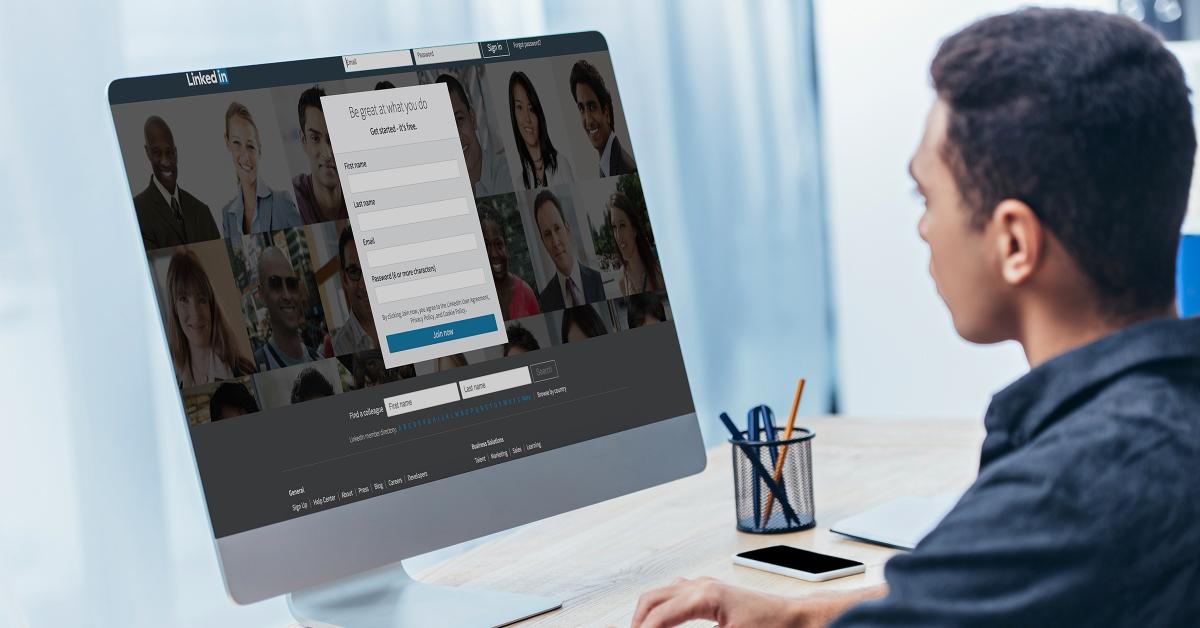LAUREL, Md. — In an age where face-to-face networking is difficult — or in some areas, impossible — business owners are increasingly turning to electronic methods to make new connections. For many, LinkedIn has been the best social media platform for these efforts.
“The biggest benefit of LinkedIn over Facebook is that people are there to make professional connections,” says Lou D’Autorio, chief operating officer at Sage Cleaners in Tampa Bay, Florida. D’Autorio, who has been using the platform to build his company’s network of clients for the past 18 months, was the featured speaker at a webinar held by the Drycleaning & Laundry Institute (DLI) last Wednesday. “In the last nine months, because of COVID-19, LinkedIn has been my No. 1 tool for getting new clients.”
During the webinar, D’Autorio gave attendees the following tips for making LinkedIn work for dry cleaners looking to expand their reach.
Build a Business Page — “The first thing to do, obviously, is to create a LinkedIn account,” D’Autorio says. “And then the second thing I tell people to do is create a LinkedIn business page. It provides more credibility for you when you reach out.” Business pages also provide users with greater options when reaching out to their audience, including better analytics and more tools when posting. Poll questions, for instance, can increase engagement with an audience.
Build a Network — Once your business page is in place, it’s time to build connections with professionals who need your services. If you already have a personal page, D’Autorio says, that’s a great place to start your business network. Even if you’re starting from scratch, however, opportunities for connections are abundant.
“There are millions of people on LinkedIn, so the first thing you’ll want to do is start in your area and then narrow your search down,” D’Autorio says. “For me, in the Tampa Bay area, there are over a million people that I have the opportunity to connect and potentially do business with.” Part of the narrowing process, in his case, is finding people in professions that need dry cleaning, even in this pandemic era. Doctors, lawyers and financial professionals are part of this audience. “Once you start making connections, you get access to a lot of their information — who they are, what they do and so on,” D’Autorio says. “If you click on contact info, if that person puts their information such as their phone number and their email address, it gives you the opportunity to contact them outside of LinkedIn.”
This process has allowed D’Autorio to build a network of contacts that he otherwise wouldn’t have. “In the Tampa Bay area, I have about 6,000 connections,” he says. “I probably have about 5,000 emails, so they’re part of my monthly email newsletter.” One of the clients Sage Cleaners has picked up through this process is a boutique men’s clothing company in downtown Tampa. “We’ve developed a relationship over the past nine months, and now he’s referring his clients who buy suits and dress shirts to our company. My pickup and delivery services now service a lot of his clients.”
Build Trust — To turn a network of connections into actual customers, however, requires more than simply asking for business through a social media site. It requires turning contacts into relationships. “I never try to ‘sell’ them right away,” D’Autorio says. “Think of it from their perspective. I hate being sold up front.”
D’Autorio builds relationships by pushing out educational content to his connections about his profession, as well as asking questions and finding out what his audience needs and what their interests are. He also invites his audience to take a tour of his company’s facilities to educate them about the drycleaning process; about 5% of those asked take him up on his offer.
For connections in the personal shopping or concierge professions, this approach can create a beneficial rapport for both parties. “People like this are trying to make their clients’ lives easier,” he says. “I’m educating them, I’m showing myself to be the expert in the market, and they’re more inclined to refer me to their clients.”
D’Autorio estimates that he spends about an hour a day on the platform, using it to connect with other area professionals. “I probably send about 150 connection requests every day,” he says. “You want to personalize the message so it’s not a cookie-cutter process like a direct mail campaign. With those, you’ll be happy to get a 2% response rate. I’ll probably get half the people I contact to respond back to me. There are some days I don’t send any emails out because I’m just responding back to people.”
Free or Premium?
While you can do all the things D’Autorio recommends with a free account, including building a business page, going to a premium account greatly speeds along the process, he says. There are four membership levels available for various uses, ranging from $29.99 for personal use to $119.95 a month for businesses that recruit employees.
The premium levels allow users to grow their network faster by being able to ask for more connections. “On the free level, you can ask for up to 100 connections per month,” D’Autorio says. “With the premium plans, it’s unlimited.” With the paid plans, you can also email people on a limited basis outside your network to make further connections.
DLI is offering several webinars to their members in January. For those unable to attend, the webinars will be available in DLI’s on-demand video library. For more information about upcoming events, visit www.dlionline.org.
Have a question or comment? E-mail our editor Dave Davis at [email protected].

